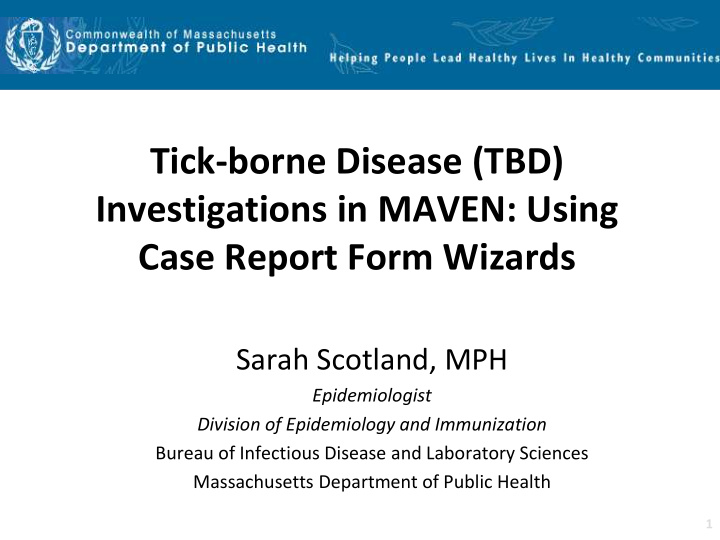



Tick-borne Disease (TBD) Investigations in MAVEN: Using Case Report Form Wizards Sarah Scotland, MPH yond Epidemiologist Division of Epidemiology and Immunization Bureau of Infectious Disease and Laboratory Sciences Massachusetts Department of Public Health 1
Importance of TBD follow-up in MAVEN • Goals of tick-borne disease surveillance: • Track emerging diseases • Monitor geographic spread • Inform targeted prevention efforts. • Babesiosis and Human Granulocytic Anaplasmosis (HGA) are high burden TBDs in Massachusetts
Before a case is assigned • All serology titers are reviewed by an Epi from the Zoonotic disease program • Titers must be above a specific threshold in order to be assigned out – Thresholds are based on values specified in the current surveillance case definition.
Creation of MAVEN Wizards • Goal: Simplify case investigation for LBOHS • Includes the highest priority variables and data points for investigation • Titers are reviewed by EPI prior requesting LBOH investigation
HGA Case Follow-up
HGA: Key Questions for Investigation
Babesiosis Case Follow-up Importance of follow-up in MAVEN
Babesiosis: Key Questions for Investigation
Investigation Tip • Always contact a provider’s office to confirm the diagnosis and obtain clinical information BEFORE contacting the patient. • If you are able to obtain all of the information in the wizard from the provider, then you can consider the investigation completed. • Contacting patient directly is encouraged (not required) to answer questions/provide educational materials.
Questions? Sarah Scotland, MPH Sarah.scotland@state.ma.us (617) 983-6800 Epidemiologist Division of Epidemiology and Immunization Bureau of Infectious Disease and Laboratory Sciences Massachusetts Department of Public Health
Recommend
More recommend